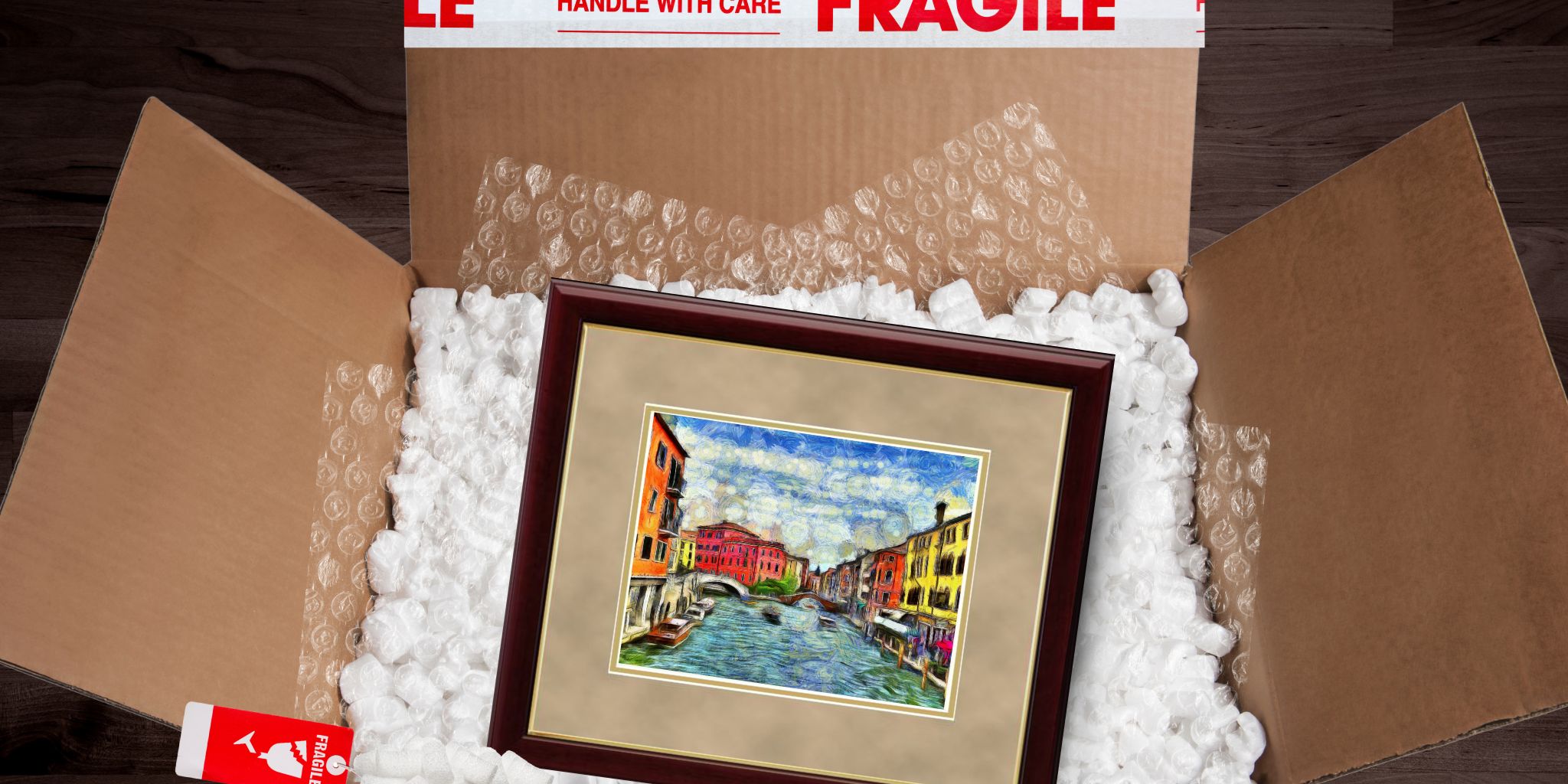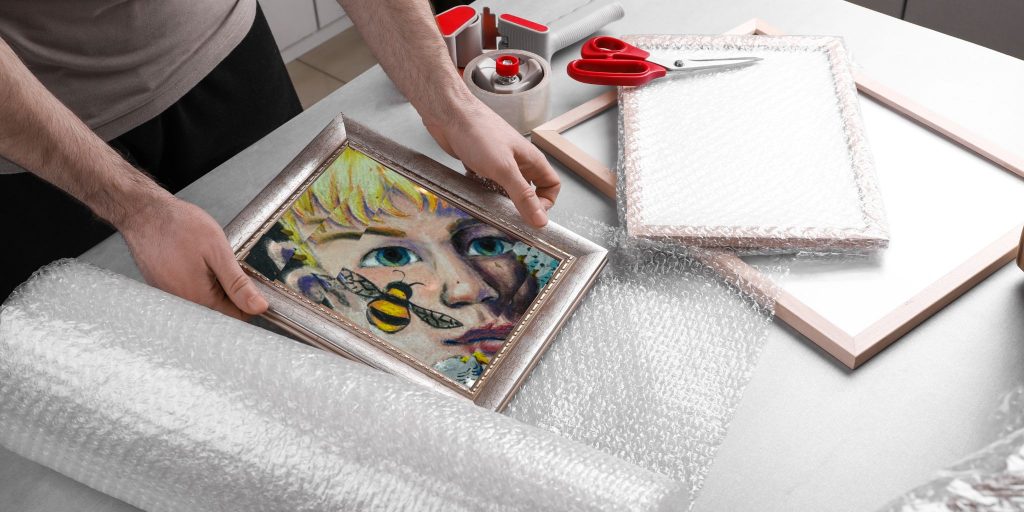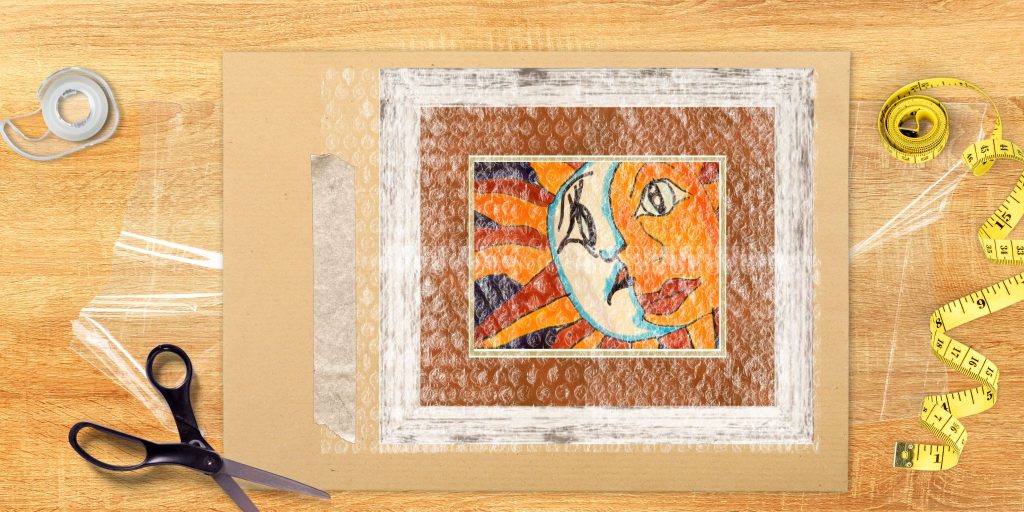
When handling any valuable artifact or while packing art, it’s important to spend the time and effort planning the best ways to transport the item. The requirements vary depending on the value of the piece of art, although the central premise of ensuring that it gets to and from its destination unbroken is a critical consideration.
At Church Hill Classics, we’ve been packing and shipping fragile custom frames for more than three decades. We are dedicated to the rich art history of making frames by hand and protecting them in transit. It’s why we developed our patented SMART moving box, which has been tested for ultimate tensile strength and is made with 100% curbside recyclable cardboard.
Whether your valuable object or famous painting needs to be packaged for a few days or for many years, the packaging and handling must be sufficient to prevent damage, discoloration, or deterioration to the item. These do’s and don’ts will help your expensive paintings and valuable items stay safe and ensure it emerges from shipping and storage in its original state.
Things You Should Do:
- Always consult an art conservator or packaging service before shipping. Find out the safest packing materials for each valuable. Certain materials might deteriorate the object if not compatible with the original contents.
- Only package valuables that are in good condition. More damage is likely to occur to an item that is already weakening.
- Wear white cotton gloves when packaging any valuable. This will prevent unwanted fingerprints or dirt from getting on the object.
- Anticipate that the item could experience different humidity and environment changes. Line the box or crate with insulation paper, polyethylene, or bubble wrap. This will create a moisture and thermal barrier.
- Use soft sandbags or a pillow between smaller pieces of art or valuables. This will reduce the possibility of the objects hitting each other and breaking during transportation.
- Label the contents of each box or package to reduce confusion or the possibility of the valuable getting lost during transportation. Also, all boxes with fragile items should be marked accordingly.

Things You Shouldn’t Do:
- Don’t use any packaging materials that contain acid. Make a special note to use cardboard boxes, boards, or other packaging materials that contain acid-free substances. Certain acids could drastically change the valuable object.
- When securing a box or crate, never use nails or staples. The vibrations can cause serious damage to the item. Instead, try using screws or heavy-duty boxing tape.
- Avoid working in a cluttered, dirty environment like a basement or attic. A clean, isolated packaging area will prevent dirt or dust from entering the package and affecting the valuable’s condition.
- Don’t use just any packaging materials. The materials must be compatible with the original materials used for the piece of art or valuable object. Research this through an art conservator before going ahead with packing and handling.
- Don’t try to lift heavy objects yourself. Use a trolley to help move bulky or unwieldy items.
- When packaging framed art or photographs, don’t allow the packaging tape to touch the frame or artwork. This could damage them.
- Never roll any paper artwork for transportation. Place the paper between two sheets of acid-free backing board. Rolling the paper can cause permanent damage.
Other Important Considerations
Ship Only When Necessary
The best way to transport an irreplaceable document, book, or work of art on paper is to pack it securely and deliver it yourself. Even under the best of circumstances, shipping by common carriers always involves some risk. Objects may be exposed to crushing, shock, vibrations, or drastic changes in temperature and relative humidity (RH). Packages can be left out in the rain. The risk of damage can be minimized by choosing a reliable carrier and, even more, by securely packing the object.
Choose a Reliable Carrier
UPS and Federal Express: These carriers will not knowingly accept art objects, unique items, or irreplaceable artifacts; for that reason, we would not recommend UPS or Federal Express as carriers for works of art or historical materials. They are primarily for general public use, since both of these carriers have limited insurance limits on art in transit, often just $500. If you’re considering one of these carriers, determine in advance if they’ll cover a claim for the value at which you insure the package.
Fine arts shipping services: These companies offer door-to-door trucking with special handling for valuable or irreplaceable objects, and some also offer packing and crating services. Fine arts shippers, like those used by the Museum of Modern Art of New York City or other national gallery or popular culture museums, are very reliable but usually expensive. Check your local telephone directory for possible local providers, or consider Cadogan Tate and Fed Ex Custom Critical.

Objects Framed Under Glass
If the object is framed with glass and cannot be safely removed from the frame, it’s best not to ship it. If sending such an object is absolutely necessary, apply strips of masking tape to the glass. The tape may not keep the glass from cracking, but it will hold the glass in position so there is less danger of damaging the object. The tape should cover the entire surface of the glass in parallel strips that are both vertical and horizontal. To absorb shocks, framed pictures must be cushioned extremely well.
Fragile or Delicate Objects
Special care must be taken with fragile objects. Those created with media such as pastels or charcoal drawings are especially vulnerable to vibrations, which occur during travel. Such materials should be hand-carried whenever possible. If pastels must be shipped, speak with a conservator first.
Crates
Crates afford the most protection for valuable art or three-dimensional items, although ordinary wood crates are not waterproof or even water-resistant. The most you can expect from the average well-made crate is physical protection. No matter where you’re sending a painting in the world, you want it to be shipped according to the strict standards of today’s art galleries. To ensure that the contents are not exposed to rain or other hazardous conditions, the art lover must use a reliable carrier.
Each object should be wrapped and packed so it does not slide around in the crate. Enclose a packing list of all objects as well as your name, address, phone number and any special instructions. Wood, especially plywood, is the material most commonly used for crating. If you make the crate yourself, use flat-head screws. Nails are not as strong and are difficult to remove when unpacking. Removing nails may cause jarring of the contents and damage to the crate, which might otherwise be reused. Large crates should have handles or wood extensions that allow them to be lifted and moved easily.
Lucie Voves is the CEO and Founder of Church Hill Classics/diplomaframe.com.










